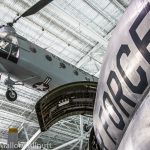One of the most essential — but also, most often overlooked — aspects of owning an aircraft is knowing where and how to store it. Like a car or boat, most of an aircraft’s life is spent on the ground, waiting for you to take it for a ride. Thus, it is essential for your aircraft’s health and well-being that you find the perfect place to house your wings. Different methods of storage can drastically increase the longevity of your bird and increase its resale value — while others can offer only heartache or unnecessary expense.Contrary to what you have once believed, not all airports and not even all hangars are equal. Here’s what you should know about your storage options before you kiss your bird goodnight.
Tie-Downs
At first glance, tying down your plane is perhaps the most desirable option for most pilots on a budget. The difference in price between tying down and hangaring an aircraft can be several hundreds of dollars per month, even at the same airport. That means pilots could potentially save thousands each year by parking their planes outside.Additionally, tie-downs — when done right — are exceptionally safe: The proper three-point tie-down, which fastens both wings and the tail to the ground, will prevent drifting, tipping, and efflux in any weather. Still, the Federal Aviation Administration has several recommendations to help pilots make smart choices in securing their planes with this method:
- Anchors should be able to resist between 3,000 and 4,000 pounds of force.
- Multi-pin anchors with several stakes are preferable. “Doggie ring” anchors (with triangle tops) fail easily from straightening under heavy loads, and auger and spiral screw-type anchors loosen dirt as they are placed, making them insecure.
- Braided nylon ropes are preferable. Natural fibers, while often cheaper and more sustainable, are subject to mildew and rot, will shrink when wet, and are significantly weaker than synthetic options.
- Slack of about one inch is ideal for tie-downs. A line that is too loose allows the plane to jerk about, and a line that is too tight will create inverted stresses which the plane is not designed to withstand.
- The rope needs a strong knot for true security. There are various simple anti-slip knots that are sufficient for tie-downs.
Unfortunately, with tying down alone, you are leaving your wings open to the elements, which could prematurely age various parts of the plane. Tie-downs are particularly injurious to planes that don’t see much use, which is an unfortunately high number of personal birds nowadays. Incessant exposure to sun, wind, and precipitation will degrade the exterior, while lack of flight time takes a toll on the engine and delicate working parts of the machine. Thus, while pilots might save thousands opting to tie down their aircraft outside, they might spend several thousand more on regular maintenance that would otherwise be unnecessary.
Hangars
Though hangaring an aircraft is markedly more costly month-to-month, securing your plane inside ensures it will remain relatively safe from the ruinous forces of nature. Plus, hangars usually boast a number of features and amenities that most pilots will find desirable when tucking in their birds for rest. The most common hangaring option is the shared hangar, in which several aircraft sleep safe through the night. Perhaps the most recognizable form of hangar, these enormous structures are usually made of thin metal or other basic construction materials to keep off sun and rain. Fabric buildings are also becoming popular with aircraft enthusiasts, as the lightweight, sustainable fabric is often less expensive to construct and thus offers lower monthly fees for pilots. Unfortunately, there is a significant downside to shared hangars: hangar rash. Careless pilots or unreliable staff can cause untold damage to your bird while they taxi and park their own planes. Still, a shared hangar is able to keep your plane quite secure while on the ground and out of the elements.
Unquestionably, the most secure way to park your plane is the T-hangar, or tee hangar. Shaped like the letter T — hence the name — these hangars fit a single aircraft, with the tail in a narrow chamber and the wings spreading wide up front. Airports often stack or nest T-hangars to maximize their use of space, which often gives pilots plenty of room to pull out and park without damaging other aircraft. Additionally, with a T-hangar, you gain private storage space to house various other equipment you need, including maintenance tools, should you enjoy tinkering on your own craft.























